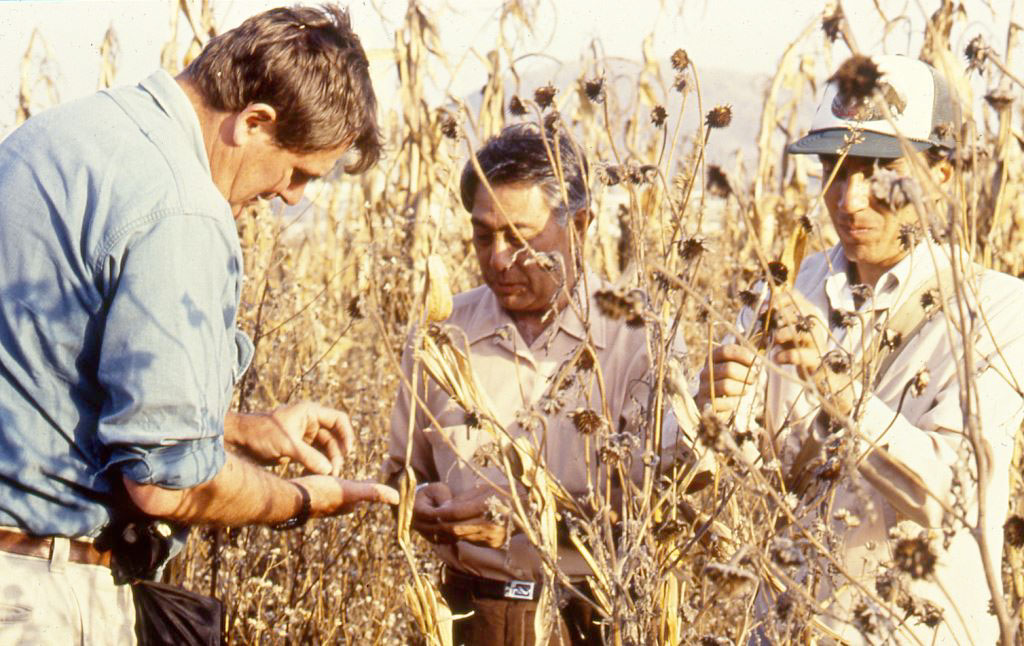"A Genebank is Forever" IMGRAC Meeting Looks to Past, Future of CIMMYT Maize Germplasm Bank
Maize genetic resource experts from around the world gathered at CIMMYT headquarters in mid-February 2016, to address both the progress that has been made and the setbacks that have occurred since the 2007 “Global Strategy for the Ex situ Conservation and Utilization of Maize Germplasm,” developed at the committee’s last meeting in 2006, as well as to determine priorities for the future of maize conservation and use. Eleven priority issues were identified by the meeting attendees, and the top five included: Political and financial constraints to access and conservation; Pre-breeding for direct use of farmers and breeders to address the challenges of climate change; Enhanced global collaboration on maize germplasm conservation; Conservation of maize wild relatives (Zea and Tripsacum species), and Enhanced global accessions-level information management.
The new Taba meeting room was unveiled at the meeting in honor of Suketoshi Taba, former head of the CIMMYT maize genebank. Taba was well known for his work in participatory breeding during his 36 year career at CIMMYT, working closely with farmers and communities to improve landraces for traits such as yield and insect resistance while still preserving grain quality for traditional uses.
“Maize is in the heart and soul of the Mexican people, which is why involving communities in participatory breeding is so important. After all, their ancestors domesticated maize 9,000 years ago, which implies a long history of interactions between plants and people,” he said. “A genebank doesn’t just store seeds, it preserves heritage.”
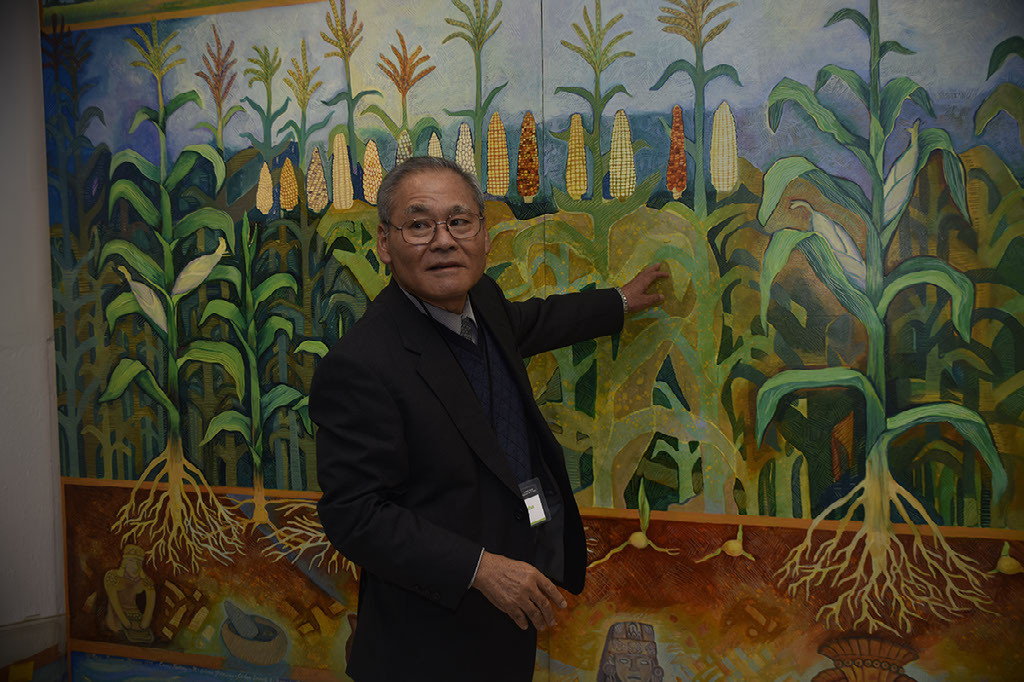
Much has changed in maize conservation since Taba started with CIMMYT in 1975. “When I arrived we were still typing passport data using typewriters. I was here when the first computer arrived at CIMMYT and we had to enter all the original data by hand. Now we have GRIN-global!” he said, referring to a new software for genebank management that attendees had the opportunity to learn about during the meeting.
Many advances have been made since the last IMGRAC meeting in 2006 as well. “There have been so many technological advances in terms of information systems and data management, among other things,” he said. “It’s so important that CIMMYT can bring together all of these world experts on maize conservation to discuss these challenges and opportunities, combining the knowledge of all of the bank managers in order to better serve users. It’s a tremendous resource, and it is important to keep talking.”
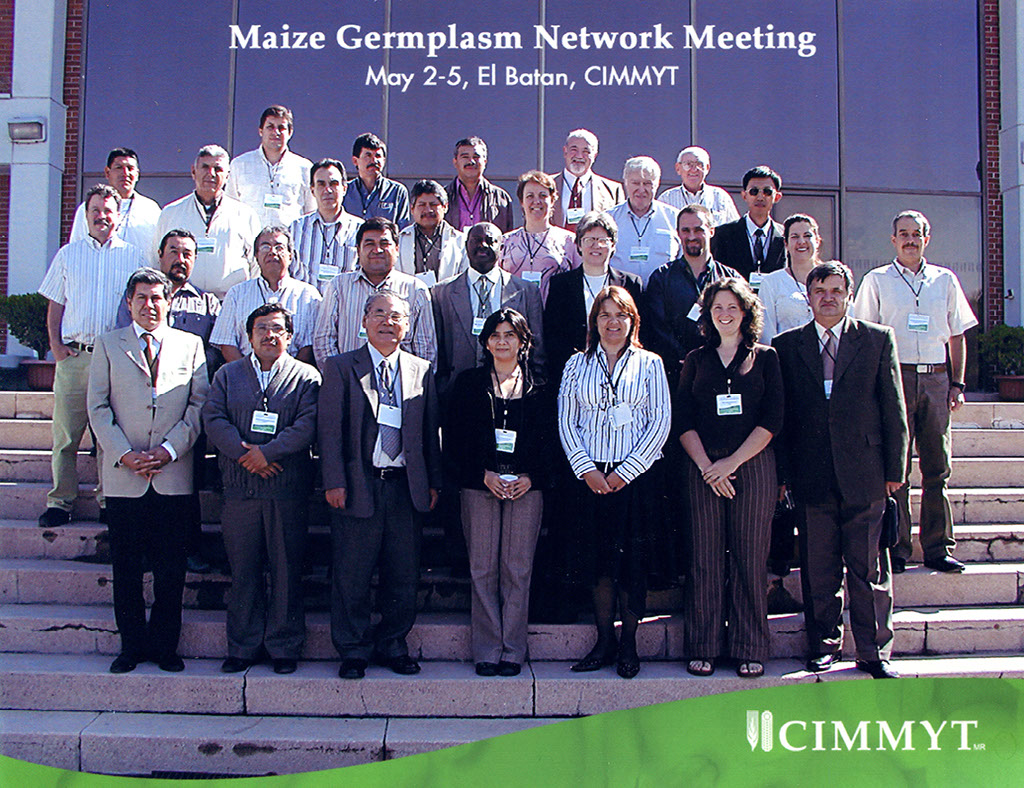
2006 Maize Germplasm Network Meeting Front Row: Juan de Dios, Victor Chavez, Suketoshi Taba, Erika Salazar, Brigitte Laliberté, Sarah Hearne, Ioan Has. 2nd Row: David Poland, Victor Segovia, Carlos Yanes, Flavio Aragon, Zachary Muthamia, Denise Costich, Brian Love, Flavia Teixeira, Manuel Gonzalez Ledesma. 3rd Row: Cesar Oscanoa, Sergio Ramirez Vega, Jesus Sanchez, Juan Manuel Hernandez, Anne Zanetto, Major Goodman, Sasern Jampatong. 4th Row: Orlando Noldin, Froylan Rincon, Mario Fuentes, Marcelo Edmundo Ferrer, Ricardo Sevilla. Missing from Photo: David Ellis, Hugo Perales, Jorge Franco, Candice Gardner, Baffour Badu-Apraku, Alejandro Navas.
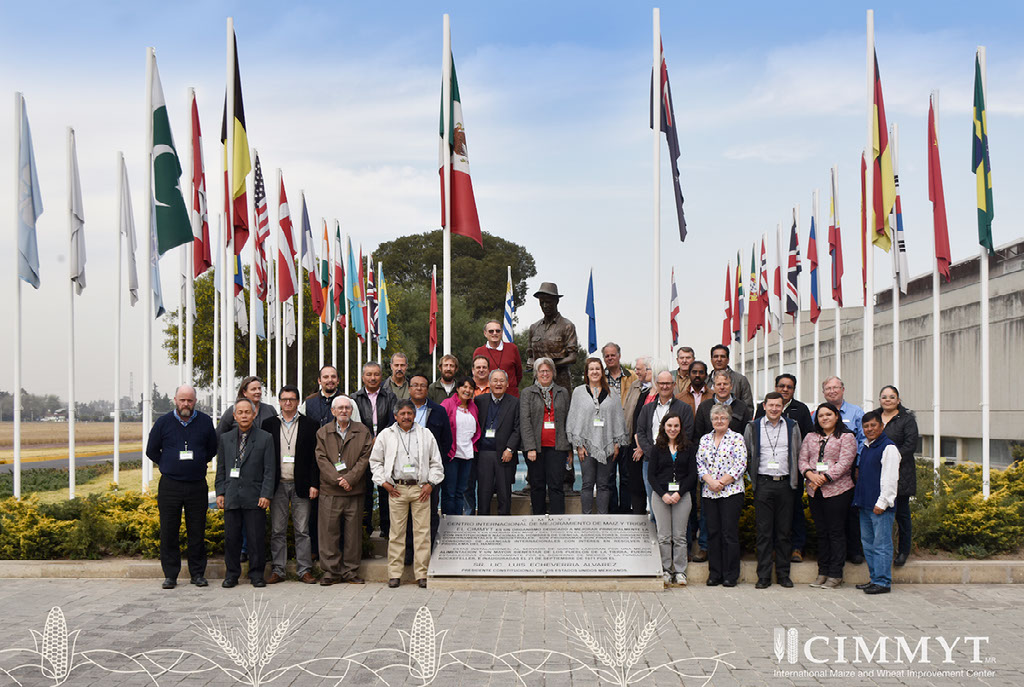
2016 International Maize Genetic Resources Advisory Committee Front Row: Michael Abberton, Art Salazar, Pedro Revilla, Ricardo Sevilla, Juan Manuel Hernandez, Cinta Romay, Candice Gardner, Matija Obreza, Bibiana Espinosa, Daniel Santiago. Second Row: Martha Willcox, Cristian Zavala, Mario Fuentes, Moises Cruz, Carolina Camacho, Suketoshi Taba, Denise Costich, Flavia Teixeira, Bill Tracy, Gordon Huestis, Martín Rodriguez, Stephen Smith, Paulina Gonzalez. Third Row: Hugo Perales, Ruairidh Sawers, Terry Molnar, Walter Trevisan (next to statue of Norman Borlaug), Tom Payne, Major Goodman, Paula Bramel, Garrison Wilkes, Ravi Walluru, Marcial Rivas. Missing from photo: Juan Carlos Alarcon, Sarah Hearne, Julia Sibya
The CIMMYT Maize Germplasm Collection: A History
Garrison Wilkes, longtime associate of the CIMMYT germplasm bank and teosinte pioneer, shared insights and knowledge from his 50 plus years of collaboration dating back to 1962 in his slide presentation entitled, "The Development of the CIMMYT Maize Germplasm Collection."
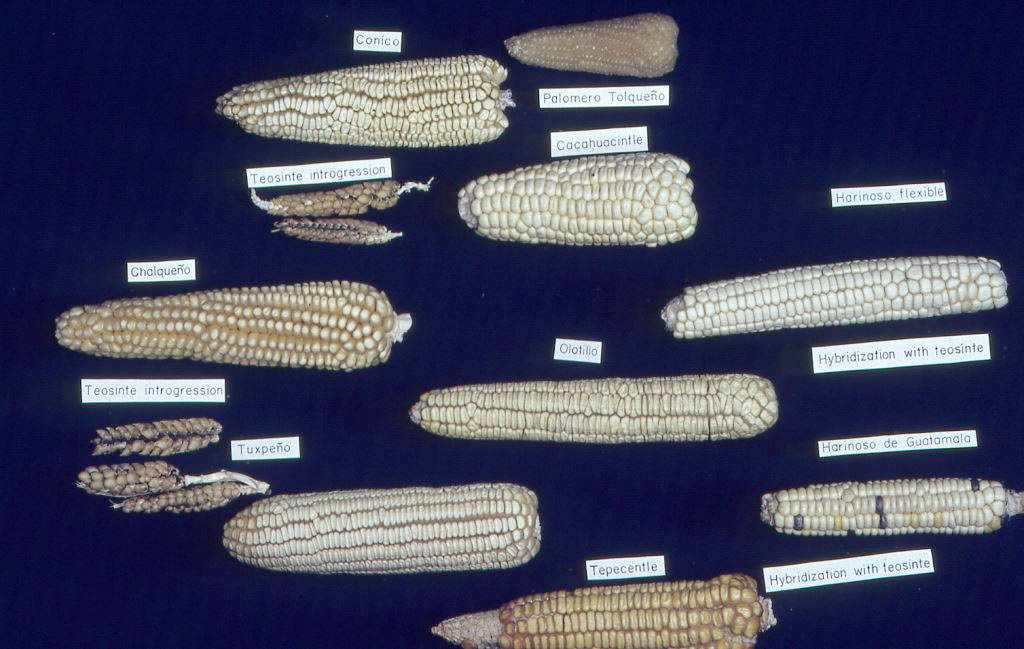
The collection that would become the CIMMYT Maize Germplasm Bank was started in Mexico in 1943 under the Mexican Corn Improvement Program of the Office of Special Studies, 23 years before the Center was officially founded as CIMMYT. By 1947, they had nearly 2,000 collections, mostly from Mexico, but also some from Guatemala and the West Indies, collected primarily by Edwin Wellhausen, Efraim Hernandez Xolocotzi and Juan Jimenez.
In an effort to organize this diversity, Professor Paul Mangelsdorf of Harvard, on a site visit for the Rockefeller Foundation, along with Ed Wellhausen, had a large outline map of Mexico drawn in chalk on the patio of one of the science buildings at the National School of Agriculture at Chapingo. They placed all of the maize ears that had been collected on their place of collection/origin and stood on a step ladder to get a better look. With this "bird's eye" view, Mangelsdorf, Wellhausen and Hernandez saw patterns in maize across Mexico for the first time, and thus the concept of geographic races of maize was conceived. This concept worked so well, it was used for all the other maize collections made in Latin America. This discovery was codified in the book, Races of Maize in Mexico (Spanish 1951, English 1952).
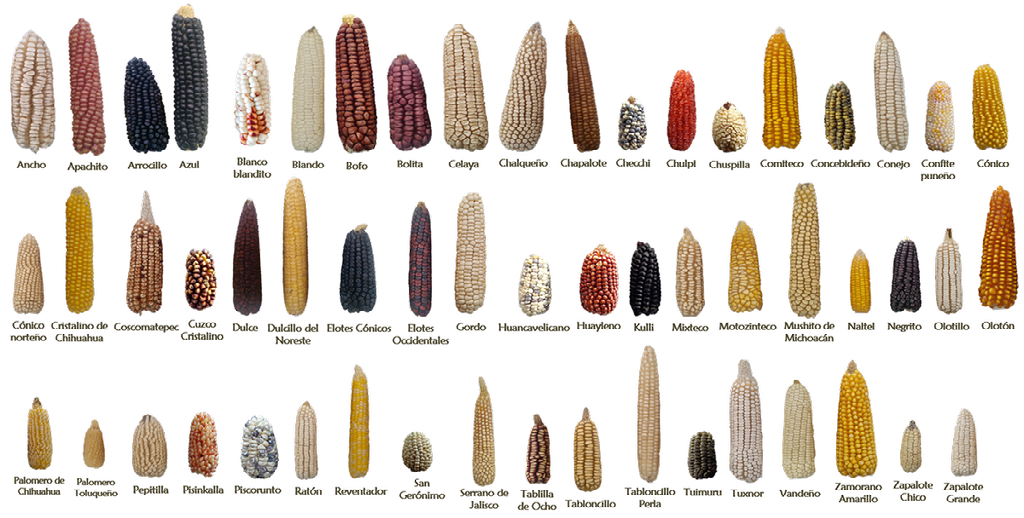
Throughout its history, the CIMMYT Maize Germplasm Bank has been a pioneer on many fronts, Wilkes explained. As the number of accessions increased—from 2,761 in 1954 to 28,000 today—the number of problems to be resolved increased as well, requiring new innovative solutions and ways of operating. It was the first genebank with complete, accurate and uniform passport data (1985), a CD-ROM Catalog (1987), a statistical analysis of proper regeneration size, and the first dual role bank with conservation and distribution functions. Lastly, and most notably, it was the first bank to take on in situ monitoring of its crop’s wild relatives, including the teosintes (Zea spp.) and the sister genus, Tripsacum.
It is important to remember that none of these achievements would have been possible without thousands of years of on-farm breeding and conservation efforts by farming families in Mexico, who preserved the invaluable maize diversity of their “criollo” varieties, or, native Mexican landraces, for the benefit of future generations. “These are the people who need to be recognized as the original donors of the genebank,” Wilkes emphasized.
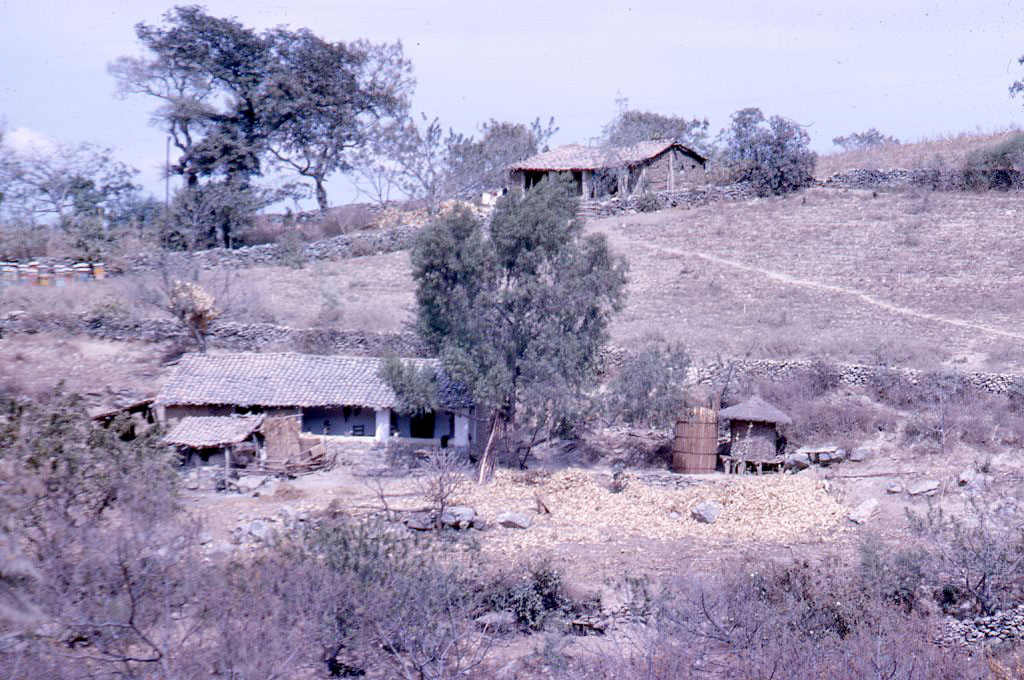
“This was the original maize genebank,” he said, referring to a traditional Mexican corn crib, the storage used by these generations of Mexican farmer’s whose invaluable in situ conservation efforts would eventually become the base of the CIMMYT maize genebank. “The past controls the future, the bank wouldn’t be what is it now without human efforts.”
